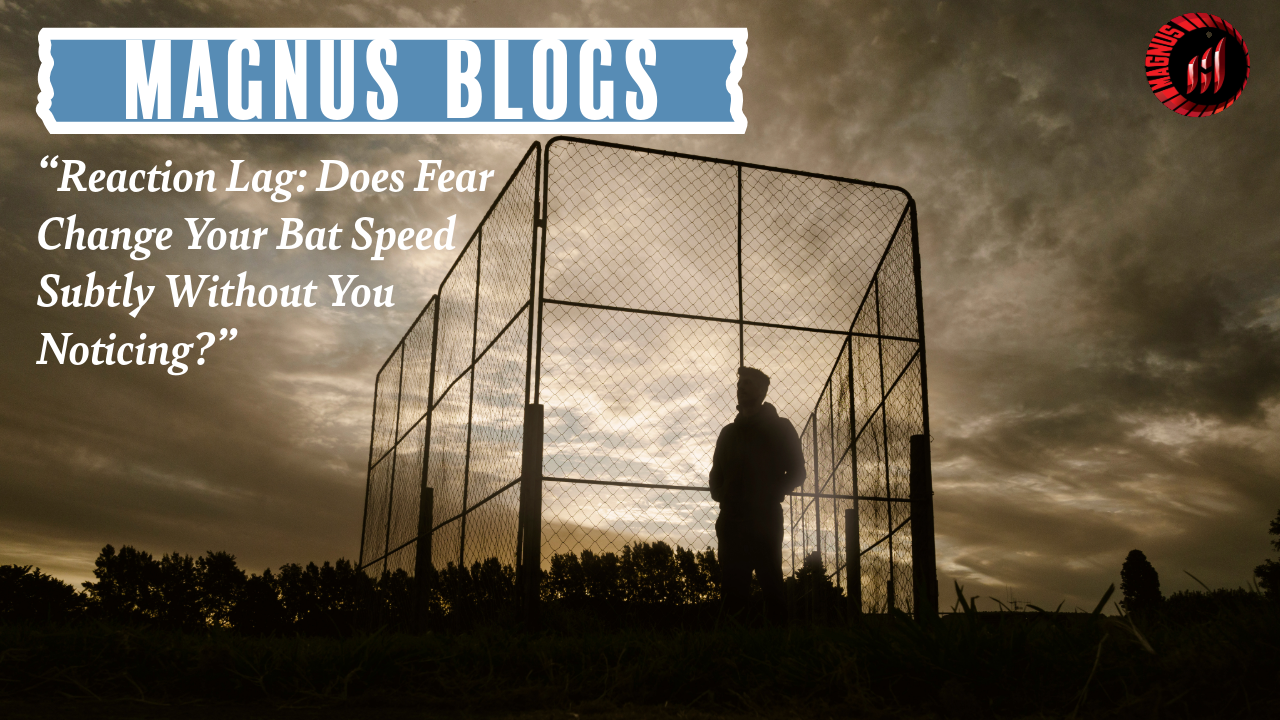In the high-stakes world of cricket, milliseconds matter. One fraction of hesitation, and your perfectly timed shot becomes a mistimed edge. But what if that hesitation doesn’t come from skill, but from something more primal — fear?
Can fear — of getting out, of fast bowling, or of failing — subtly change how fast you swing your bat? Could your bat speed slow down without you even noticing, simply because your brain is busy protecting you?
This blog explores the concept of reaction lag caused by fear, how it affects bat speed, and why your subconscious emotions might be playing a bigger role in your game than you think.
What Is Reaction Lag in Cricket?
Reaction lag refers to a delay in your physical response, typically measured in milliseconds, between recognizing a stimulus (like the bowler’s release) and initiating action (like beginning your bat swing).
While many factors influence reaction time — sleep, focus, training — fear and anxiety can cause a form of neurological hesitation that doesn’t show up in your conscious awareness, but subtly reduces speed and accuracy.
How Fear Alters Muscle Response
When you're afraid or anxious, your body activates the fight-or-flight response. This causes:
-
Increased heart rate
-
Tensed muscles
-
Slight hesitation in fine motor skills
-
Overcompensation (too defensive or too aggressive shots)
-
Disruption in muscle memory execution
Most importantly, your brain shifts from instinctive response mode (trusting training) to overthinking mode — a dangerous place for any batter.
The Bat Speed Factor
Even a 2–5% drop in bat speed can cause:
-
Late contact with the ball
-
Mistimed drives
-
Edges instead of middles
-
Difficulty facing short-pitched or swinging deliveries
The challenge? You don’t feel slower — because the change is subconscious. Your swing might feel the same, but slow-motion footage or speed sensors would tell a different story.
When Does Fear Strike?
-
Facing High Pace Bowling
Bowlers crossing 135+ km/h generate natural anxiety, especially for new or tail-end batters. This fear often leads to:-
Over-defensive footwork
-
Half-committed shots
-
Bat staying in the air longer before triggering
-
-
High-Pressure Situations
Batting in death overs or chasing a tough target can trigger doubt and emotional tension — silently lowering your reaction speed. -
Fear of Injury or Getting Out
This is common after being hit on the body or getting out cheaply in the last match. The memory plays on a loop in your mind, tightening your muscles and delaying instinctive movement.
Scientific Support: What the Studies Say
Sports psychologists and neuroscientists studying reaction time in athletes have found:
-
Fear increases cognitive load, reducing speed of decision-making and execution
-
Muscular tension from anxiety slows electromyographic (EMG) response time
-
Athletes who suppress fear with over-control tend to make more technical errors
In cricket, where bat-ball contact time is under 0.5 seconds, even minor changes in execution speed have dramatic consequences.
How to Manage Reaction Lag
-
Pre-ball Breathing
A short exhale before each delivery helps reduce tension and reset mental focus. -
Routine Familiarity
Having a consistent pre-shot ritual builds rhythm and helps the brain operate in "automatic mode." -
Desensitization
Facing fast bowling in nets regularly reduces subconscious fear. The brain begins to normalize high speed as routine. -
Visualization Training
Imagining successful shot execution (not just outcomes) wires confidence into your muscle memory. -
Tech Tools
Using smart bats or motion capture can help you track bat speed — giving visual proof of any drop during high-pressure moments.
So — does fear change your bat speed without you noticing? Yes, and often when it matters most. It’s not always a visible flinch or hesitation. Sometimes, it’s the subtle tension in your grip, a split-second delay in swing, or a shift from instinct to overthinking.
Learning to spot and train for this hidden reaction lag might be one of the most underestimated tools in elevating your game.
Trust your training. Breathe. Swing with intention — not hesitation.
